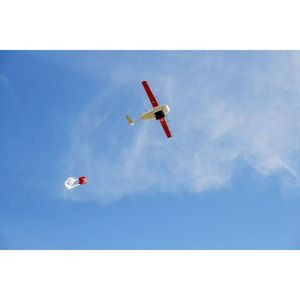The U.S. Federal Aviation Administration (FAA) authorized Zipline to make commercial deliveries beyond visual line of sight without visual observers – a milestone the entire industry has worked to achieve for years. For more than a decade, even the most advanced long-range drone deliveries in the U.S. required visual observers, stationed on the ground along a route, to watch the sky during the delivery. This historic decision will help enable broad integration of autonomous aircraft into the U.S. national airspace and make commercial drone delivery scalable and affordable.
Making widespread drone delivery a reality requires drones to have onboard perception and safety systems capable of autonomously detecting and avoiding aircraft in the sky.
Since Zipline’s drones (Zips) are equipped with an onboard detect and avoid system that has been tested and proven to enable continuous, real-time airspace monitoring, the company is uniquely positioned to grow and serve the vast majority of the United States. Zipline is the world’s largest autonomous commercial delivery service and this moment is a testament to its safe, mature operations.
The decision is a result of Zipline’s strong safety record and years-long collaboration with the FAA. Zipline also worked closely with the agency to show rigorous testing of its onboard perception system, its robust safety processes, and provided detailed data from its commercial autonomous flights. In the coming weeks, Zipline will operationalize this decision, and will fly in the U.S. without visual observers this year.
“Today we use 4,000 pound gas combustion vehicles driven by humans to do billions of deliveries across the country. It’s expensive, slow and bad for the environment. This decision means that we can start to transition delivery to solutions that are 10x as fast, less expensive, and zero emission,” said Keller Rinaudo Cliffton, CEO and Co-founder of Zipline. “It means that Zipline hubs across the country can now go from serving a few thousand homes to serving hundreds of thousands of homes each year and millions of people, which will save time, money and even lives.”
Zipline has more autonomous flight experience than any other drone delivery company in the world. The company has flown more than 50 million commercial autonomous miles and completed more than 750,000 commercial deliveries without a single major safety incident. Zipline has been flying safely without visual observers around the globe for many years.
Zipline’s robust safety system includes more than 500 preflight safety checks, strategic route design, and redundant flight-critical systems. Its onboard perception system uses ADS-B transponders that identify aircraft in the nearby airspace, as well as an acoustic avoidance system that uses small, lightweight microphones to detect and avoid other aircraft flying up to two miles away in all directions, including during the dark of night and in challenging weather.
The company has spent years researching, developing, and testing its onboard perception system, including tens of thousands of flight test encounters with aircraft. It is already deployed in the U.S. as well as several other countries.
“We applaud the FAA for taking a major step to integrate autonomous drone delivery into the airspace. This will enable more commerce, new economic opportunities and greater access for millions of Americans,” said Okeoma Moronu, Zipline’s Head of Global Aviation Regulatory Affairs. “The FAA has incredibly high safety standards and it’s a testament to the entire Zipline team that our delivery drones are entrusted to fly and deliver at scale, over populated areas, in the most complex airspace in the world.”
Zipline operates at national-scale in multiple countries where it delivers up to 140 miles round trip, and began serving the U.S. in 2020 by delivering medical supplies during the height of the pandemic. The company also achieved Part 135 aircraft carrier certification and is approved to operate the longest-range drone delivery flights in the U.S.
Zipline’s long-range system, Platform 1, operates on three continents and makes a delivery every 70 seconds. The company recently announced a number of new healthcare partners along with customers across the retail and food sectors. OhioHealth, Michigan Medicine, Sweetgreen, GNC, Pagliacci Pizza and more will all use Zipline’s new home delivery system, Platform 2 (P2), for ultra-precise, quiet drone delivery throughout the United States.
P2 Zips fly more than 300 feet above the ground. When the Zip arrives at its destination, it hovers safely and quietly at that altitude, while its fully autonomous delivery droid maneuvers down a tether, steers to the correct location, and gently drops off its package to areas as small as a patio table or the front steps of a home. Zipline’s P2 technology enables customers to use the service as both a hub-and-spoke model that can deliver in a 10 mile service radius, and as a network in which Zips can travel up to 24 miles each way from dock to dock, expanding a business’ reach. The company is conducting high-volume flight tests of P2 this year and will release its first P2 customer deployment next year.
Currently Zipline operates in three continents, and each flight reduces delivery emissions by 97% compared to traditional automotive deliveries. Zipline is the trusted partner for governments, global companies, leading healthcare and pharmaceutical companies, restaurants and retailers. To learn more visit flyzipline.com.
 Unmanned Aerial Vehicle The latest drone news
Unmanned Aerial Vehicle The latest drone news



